The outer Solar System has enough mysteries and potential discoveries to keep scientists busy for decades. Case in point, Uranus and it’s system of moons. Since the beginning of the Space Age, only one space probe has ever passed by this planet and its system of moons. And yet, that which has been gleaned from this one mission, and over a century and a half of Earth- (and space-) based observation, has been enough to pique the interest of many generations of scientists.
For instance, just about all detailed knowledge of Uranus’ 27 known moons – including the “sprightly” moon Ariel – has been derived from information obtained by the Voyager 2 probe. Nevertheless, this single flyby revealed that Ariel is composed of equal parts ice and rock, a cratered and geologically active surface, and a seasonal cycle that is both extreme and very unusual (at least by our standards!)
Discovery and Naming:
Ariel was discovered on October 24th, 1851, by English astronomer William Lassel, who also discovered the larger moon of Umbriel on the same day. While William Herschel, who discovered Uranus’ two largest moons of Oberon and Titania in 1787, claimed to have observed four other moons in Uranus’ orbit, those claims have since been concluded to be erroneous.
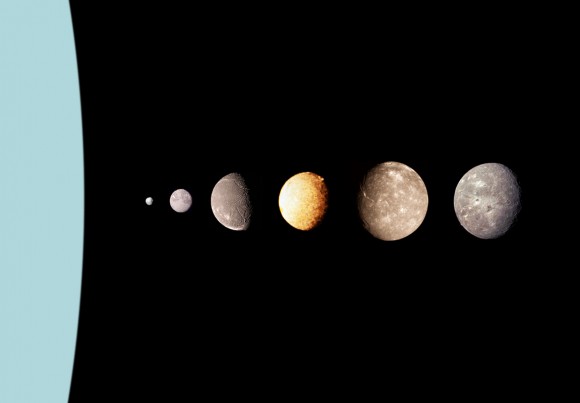
As with all of Uranus’ moons, Ariel was named after a character from Alexander Pope’s The Rape of the Lock and Shakespeare’s The Tempest. In this case, Ariel refers to a spirit of the air who initiates the great storm in The Tempest and a sylph who protects the female protagonist in The Rape of the Lock. The names of all four then-known satellites of Uranus were suggested by John Herschel in 1852 at the request of Lassell.
Size, Mass and Orbit:
With a mean radius of 578.9 ± 0.6 km and a mass of 1.353 ± 0.120 × 1021 kg, Ariel is equivalent in size to 0.0908 Earths and 0.000226 times as massive. Ariel’s orbit of Uranus is almost circular, with an average distance (semi-major axis) of 191,020 km – making it the second closest of Uranus’ five major moons (behind Miranda). It has a very small orbital eccentricity (0.0012) and is inclined very little relative to Uranus’ equator (0.260°).
With an average orbital velocity of 5.51 km/s, Ariel takes 2.52 days to complete a single orbit of Uranus. Like most moons in the outer Solar System, Ariel’s rotation is synchronous with its orbit. This means that the moon is tidally locked with Uranus, with one face constantly pointed towards the planet.
Ariel orbits and rotates within Uranus’ equatorial plane, which means it rotates perpendicular to the Sun. This means that its northern and southern hemispheres face either directly towards the Sun or away from it at the solstices, which results in an extreme seasonal cycle of permanent day or night for a period of 42 years.
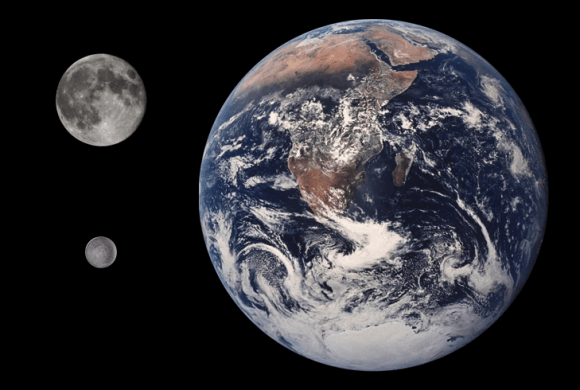
Ariel’s orbit lies completely inside the Uranian magnetosphere, which means that its trailing hemisphere is regularly struck by magnetospheric plasma co-rotating with the planet. This bombardment is believed to be the cause of the darkening of the trailing hemispheres (see below), which has been observed for all Uranian moons (with the exception of Oberon).
Currently Ariel is not involved in any orbital resonance with other Uranian satellites. In the past, however, it may have been in a 5:3 resonance with Miranda, which could have been partially responsible for the heating of that moon, and 4:1 resonance with Titania, from which it later escaped.
Composition and Surface Features:
Ariel is the fourth largest of Uranus’ moons, but is believed to be the third most-massive. Its average density of 1.66 g/cm3 indicates that it is roughly composed of equal parts water ice and rock/carbonaceous material, including heavy organic compounds. Based on spectrographic analysis of the surface, the leading hemisphere of Ariel has been revealed to be richer in water ice than its trailing hemisphere.
The cause of this is currently unknown, but it may be related to bombardment by charged particles from Uranus’s magnetosphere, which is stronger on the trailing hemisphere. The interaction of energetic particles and water ice causes sublimation and the decomposition of methane trapped in the ice (as clathrate hydrate), darkening the methanogenic and other organic molecules and leaving behind a dark, carbon-rich residue (aka. tholins).
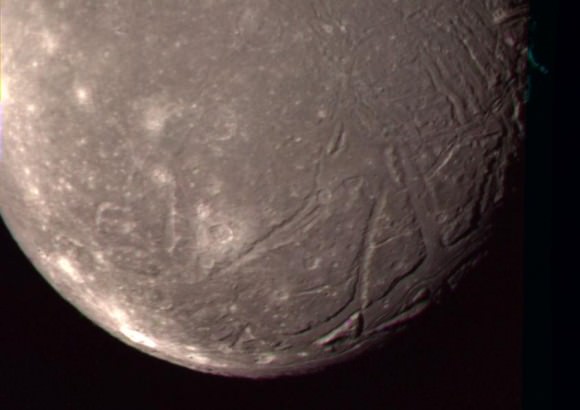
Based on its size, estimates of its ice/rock distribution, and the possibility of salt or ammonia in its interior, Ariel’s interior is thought to be differentiated between a rocky core and an icy mantle. If true, the radius of the core would account for 64% of the moon’s radius (372 km) and 52% of its mass. And while the presence of water ice and ammonia could mean Ariel harbors an interior ocean at it’s core-mantle boundary, the existence of such an ocean is considered unlikely.
Infrared spectroscopy has also identified concentrations of carbon dioxide (CO²) on Ariel’s surface, particularly on its trailing hemisphere. In fact, Ariel shows the highest concentrations of CO² on of any Uranian satellite, and was the first moon to have this compound discovered on its surface.
Though the precise reason for this is unknown, it is possible that it is produced from carbonates or organic material that have been exposed to Uranus’ magnetosphere or solar ultraviolet radiation – due to the asymmetry between the leading and trailing hemispheres. Another explanation is outgassing, where primordial CO² trapped in Ariel’s interior ice escaped thanks to past geological activity.
The observed surface of Ariel can be divided into three terrain types: cratered terrain, ridged terrain and plains. Other features include chasmata (canyons), fault scarps (cliffs), dorsa (ridges) and graben (troughs or trenches). Impact craters are the most common feature on Ariel, particularly in the south pole, which is the moon’s oldest and most geographically extensive region.
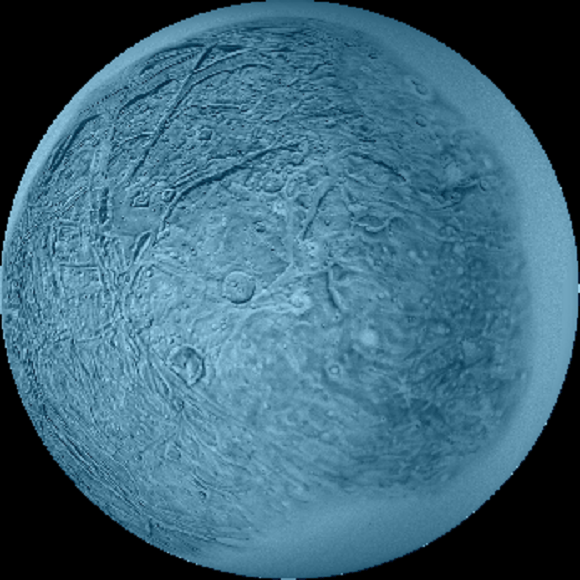
Compared to the other moons of Uranus, Ariel appears to be fairly evenly-cratered. The surface density of the craters, which is significantly lower than those of Oberon and Umbriel, suggest that they do not date to the early history of the Solar System. This means that Ariel must have been completely resurfaced at some point in its history, most likely in the past when the planet had a more eccentric orbit and was therefore more geologically active.
The largest crater observed on Ariel, Yangoor, is only 78 km across, and shows signs of subsequent deformation. All large craters on Ariel have flat floors and central peaks, and few are surrounded by bright ejecta deposits. Many craters are polygonal, indicating that their appearance was influenced by the crust’s preexisting structure. In the cratered plains there are a few large (about 100 km in diameter) light patches that may be degraded impact craters.
The cratered terrain is intersected by a network of scarps, canyons and narrow ridges, most of which occur in Ariel’s mid-southern latitudes. Known as chasmata, these canyons were probably graben that formed due to extensional faulting triggered by global tension stresses – which in turn are believed to have been caused by water and/or liquid ammonia freezing in the interior.
These chasmata are typically 15–50 km wide and are mainly oriented in an east- or northeasterly direction. The widest graben have grooves running along the crests of their convex floors (known as valles). The longest canyon is Kachina Chasma, which is over 620 km long.
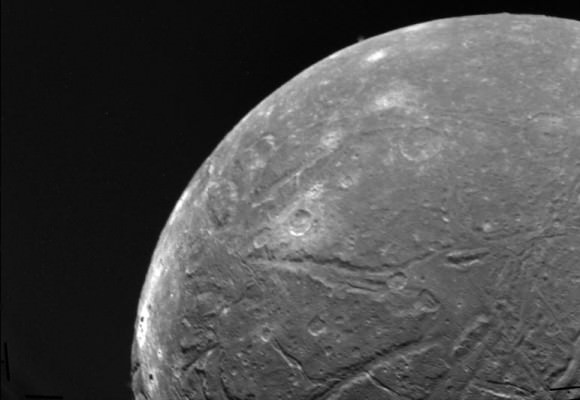
The ridged terrain on Ariel, which is the second most-common type, consists of bands of ridges and troughs hundreds of kilometers long. These ridges are found bordering cratered terrain and cutting it into polygons. Within each band (25-70 km wide) individual ridges and troughs have been observed that are up to 200 km long and 10-35 km apart. Here too, these features are believed to be a modified form of graben or the result of geological stresses.
The youngest type of terrain observed on Ariel are its plains, which consists of relatively low-lying smooth areas. Due to the varying levels of cratering found in these areas, the plains are believed to have formed over a long period of time. They are found on the floors of canyons and in a few irregular depressions in the middle of the cratered terrain.
The most likely origin for the plains is through cryovolcanism, since their geometry resembles that of shield volcanoes on Earth, and their topographic margins suggests the eruption of viscous liquid – possibly liquid ammonia. The canyons must therefore have formed at a time when endogenic resurfacing was still taking place on Ariel.
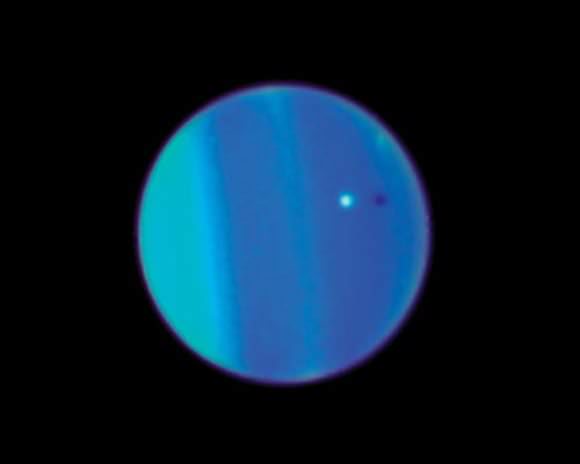
Ariel is the most reflective of Uranus’s moons, with a Bond albedo of about 23%. The surface of Ariel is generally neutral in color, but there appears to be an asymmetry where the trailing hemisphere is slightly redder. The cause of this, is believed to be interaction between Ariel’s trailing hemisphere and radiation from Uranus’ magnetosphere and Solar ultraviolet radiation, which converts organic compounds in the ice into tholins.
Like all of Uranus’ major moons, Ariel is thought to have formed in the Uranunian accretion disc; which existed around Uranus for some time after its formation, or resulted from a large impact suffered by Uranus early in its history.
Exploration:
Due to its proximity to Uranus’ glare, Ariel is difficult to view by amateur astronomers. However, since the 19th century, Ariel has been observed many times by ground-based on space-based instruments. For example, on July 26th, 2006, the Hubble Space Telescope captured a rare transit made by Ariel of Uranus, which cast a shadow that could be seen on the Uranian cloud tops. Another transit, in 2008, was recorded by the European Southern Observatory.
It was not until the 1980s that images were obtained by the first and only orbiter to ever pass through the Uranus’ system. This was the Voyager 2 space probe, which photographed the moon during its January 1986 flyby. The probe’s closest approach was at a distance of 127,000 km (79,000 mi) – significantly less than the distances to all other Uranian moons except Miranda.
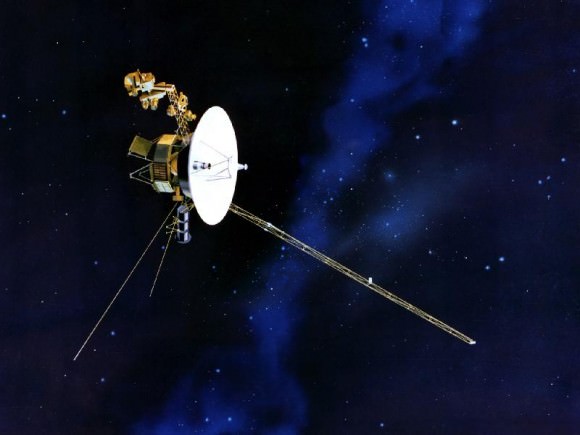
The images acquired covered only about 40% of the surface, but only 35% was captured with the quality required for geological mapping and crater counting. This was partly due to the fact that the flyby coincided with the southern summer solstice, where the southern hemisphere was pointed towards the Sun and the northern hemisphere was completely concealed by darkness.
No missions have taken place to study Uranus’ system of moons since and none are currently planned. However, the possibility of sending the Cassini spacecraft to Uranus was evaluated during its mission extension planning phase in April of 2008. It was determined that it would take about twenty years for Cassini to get to the Uranian system after departing Saturn. However, this proposal and the ultimate fate of the mission remain undecided at this time.
All in all, Uranus’ moon Ariel is in good company. Like it’s fellow Uranians, its axial tilt is almost the exact same as Uranus’, it is composed of almost equal parts ice and rock, it is geologically active, and its orbit leads to an extreme seasonal cycle. However, Ariel stands alone when its to its brightness and its youthful surface. Unfortunately, this bright and youthful appearance has not made it an easier to observe.
Alas, as with all Uranian moons, exploration of this moon is still in its infancy and there is much we do not know about it. One can only hope another deep-space mission, like a modified Cassini flyby, takes place in the coming years and finishes the job started by Voyager 2!
We have many interesting articles on Ariel and Uranus’ moons here at Universe Today. Here’s one about Ariel’s 2006 transit of Uranus, its 2008 transit, and one which answers the all-important question How Many Moons Does Uranus Have?
For more information, check out NASA’s Solar System Exploration page on Ariel, and The Planetary Society’s Voyager 2 Ariel image catalog.
Sources:

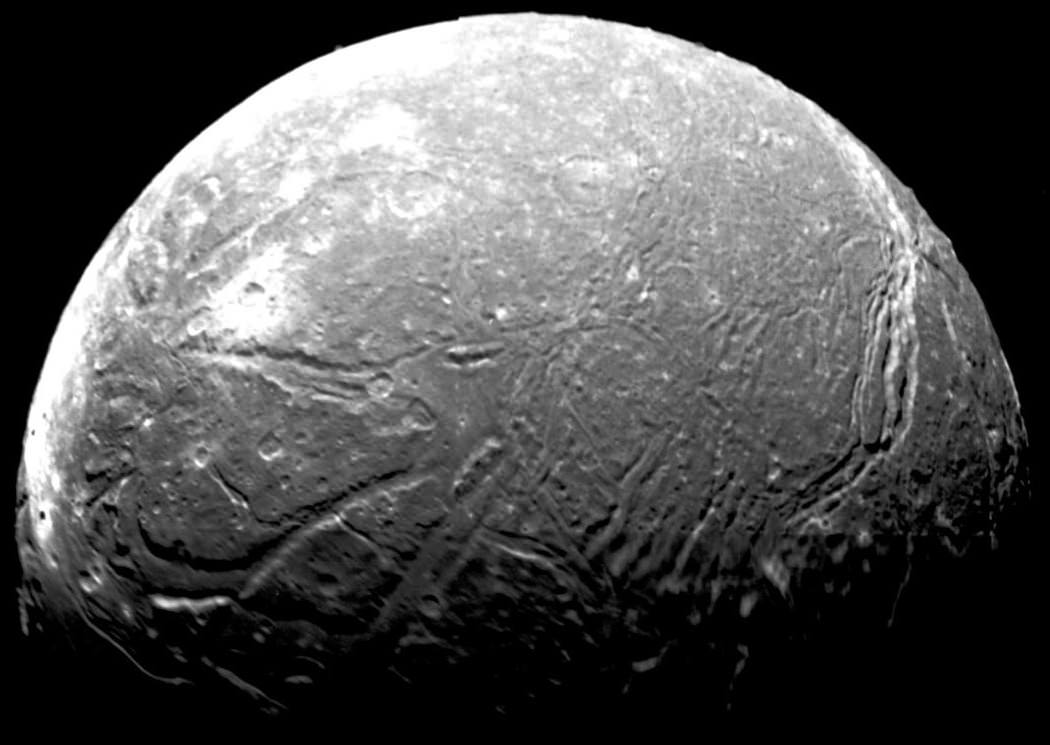
Looks to me like Enceladus. BTW – we miss you, V’ger (both) 😉
I am both amused by – and a bit ashamed that I get – your comment!